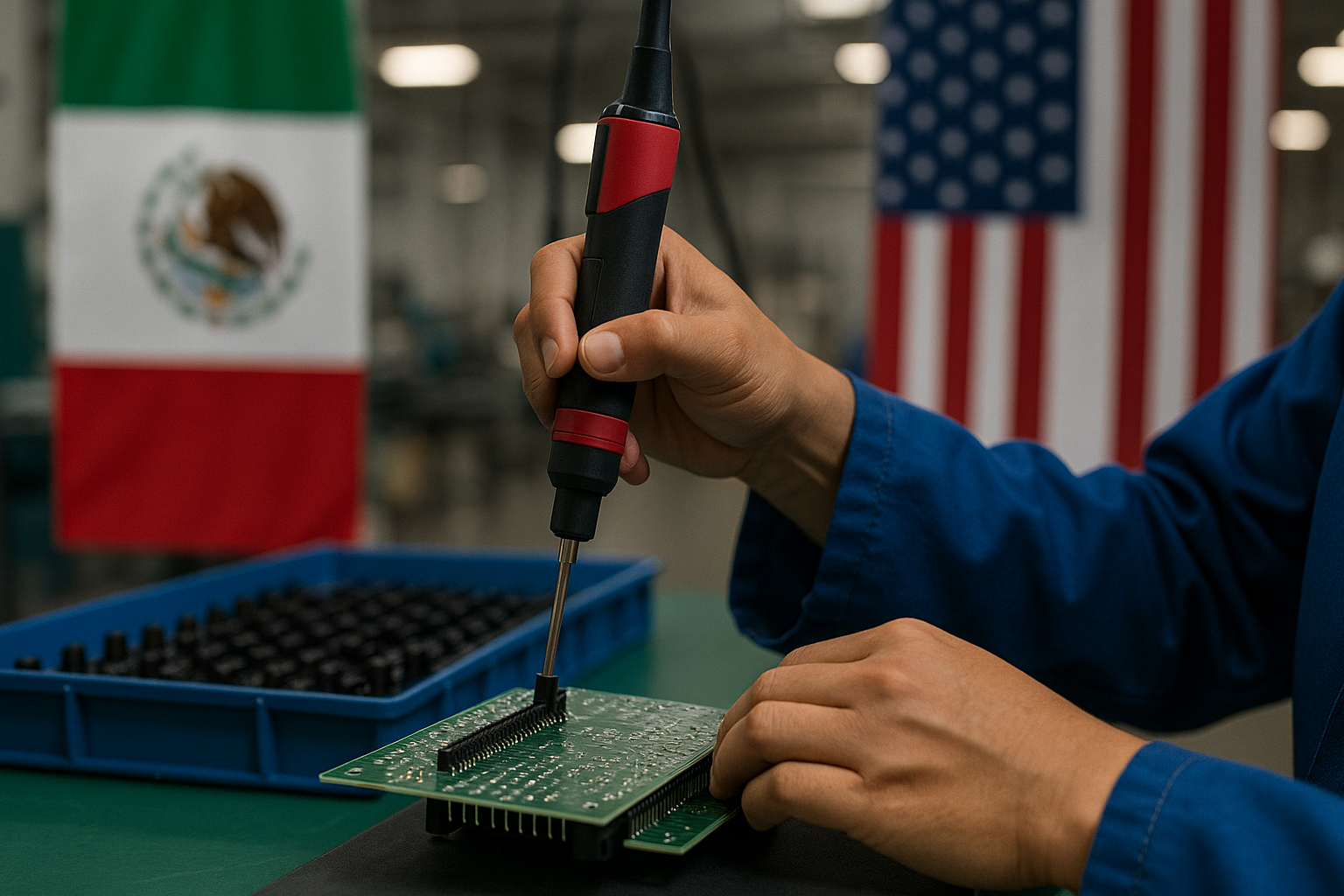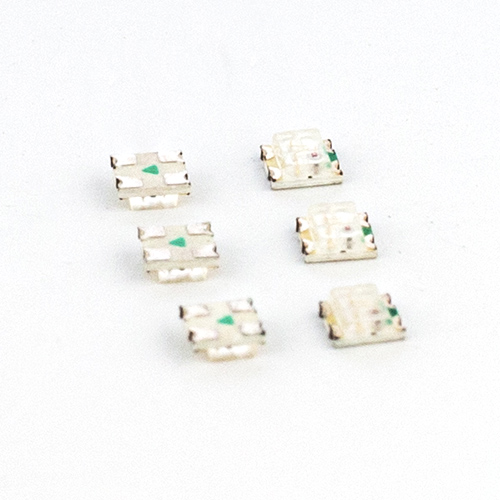
One of the biggest post-pandemic lessons for OEMs is to weigh the costs associated with supply chain disruptions a little heavier than before.
While product cost, quality, and delivery will always be at the top of the priority list, manufacturers should also include the 3Rs of supply chain risk management:
- Resilience - having a workable contingency plan is essential. Be sure to include not just a plan but protocols for quickly allocating (or re-allocating) assets and people to support your backup plan.
- Responsiveness - when there’s an impending crisis or mission-critical setback, how soon will the manufacturer and company be able to react?
- Reconfigurability - the ability to move things around quickly to avoid delays — whether moving a third-tier supplier up the ranks or finding an alternate production facility.
Nearshoring strategies are increasingly important for creating more resilient supply chains, as they help reduce lead times, mitigate risks from global disruptions, and provide greater control over sourcing.
Digging deeper into supply value chains, logistics teams should also consider:
- Infrastructure - both physical and informational infrastructures should be evaluated for weaknesses and improvements, as a breakdown of either type could be detrimental to production.
- Visibility - having real-time transparency into costs and where your products are in the process at any given time. Digital integration and real-time data significantly help manage the global supply chain and improve supply chain resilience.
- Traceability - understanding all aspects of your product — from concept to delivery — can provide insight into where improvements can be made and where hidden vulnerabilities may lie. Many OEMs had hidden weaknesses in their supply chain, brought to light during the pandemic.
Diversify, Diversify, Diversify
You never know what could happen in one region of the world that could drive costly delays for your production. The old adage was to dual source vendors for parts and components. Now, experts recommend having at least three tier suppliers.
At VCC, we noticed a shift in the BOMs that came through our door, as we went from being the second supplier to the first due to product and production availability.
Companies with key suppliers in China and Europe should also consider adding or reprioritizing North American manufacturing partners to enhance reliability. While emerging markets can provide attractive opportunities for cost savings and growth, they also present potential risks related to supply chain visibility, political stability, and regulatory changes that must be carefully evaluated.
Total Cost of Ownership Drives Supply Chain Decisions
When determining where manufacturing should take place, companies often weigh several variables to determine the total cost of ownership (TCO). These variables include a mix of hard and soft costs, including:
- Tariffs, customs, duties - how many fees will the company incur in transporting the finished goods to distribution channels or the customer? Given the trade climate between the U.S. and your country of origin, these costs can add up quickly. For example, Chinese goods may incur steep tariffs, while those produced in Mexico can be imported without those fees.
- Freight and packaging costs - for most manufacturers, transportation is their largest expense. There are many ways to reduce these costs, from shortening travel distances for products to rethinking packaging and even partnering with competitors to share shipping costs. Nearshoring can lead to significant cost savings and lower transportation costs, as well as a reduced carbon footprint due to shorter shipping distances.
- Lead times - how long will it take to get the finished product in hand? Lead times can vary depending on how far away production takes place, as well as how much time the design and approvals take. For example, if a company based in California has its products made in China, there’s a nearly 12-hour delay for every communication of feedback, design changes, etc. Then, there’s the additional time it takes for finished products to travel by ship, go through customs, then arrive at the final destination in the U.S.
- Inventory carrying costs - between labor, storage, insurance, and freight, storing inventory to minimize disruption won’t be cheap. But neither is completely running out of stock. Carefully balance a reasonable amount of inventory to carry until contingency plans or full production can ramp up.
- Political environment - What’s the political climate in the region where your goods are produced? No country is immune to civil unrest. However, emerging countries seem to face their fair share of politically charged events that could impact the production and delivery of your products, including wars, riots, and protests.
- Opportunity cost - trading one action for another in hopes of a better return is what opportunity cost is all about. Weighing this metric requires a holistic approach and evaluation of multiple KPIs.
Nearshoring Supply Chain Advantages
Nearshore manufacturing is the production strategy with the power to dramatically reduce the total cost of ownership and supply chain risks. The benefits of nearshoring are numerous, offering strategic advantages for business operations such as improved supply chain efficiency, reduced lead times, and enhanced responsiveness to market changes. Advantages include:
#1 Supply Chain Gains
Right now, many companies are learning the hard way that the “cheap labor” they tap into worldwide has many potential hidden costs that impact their bottom line even more. Alternatively, nearshoring empowers OEMs through:
- Reduced production costs - nearshore manufacturing reduces costs from every angle, especially freight and transportation fees.
- Shorter lead times - get your product to customers faster thanks to manufacturing facilities in the same time zone (or pretty close).
- Tariff-free operation - trade wars with Asia don’t seem to be going away anytime soon. But it’s the manufacturers and consumers who pay the ultimate price of increased tariffs and fees. These additional costs can make your product much more expensive to produce and less profitable to sell than those manufactured in North America.
Efficiencies in your supply chain may be the most obvious advantage, but nearshoring delivers other benefits that are becoming increasingly important during ever-changing times.
#2 - Agile Development Methodology
Speed isn’t the only thing you can gain from nearshore production. For example, VCC uses agile development processes to achieve more streamlined project management from start to finish.
Our ISO9001 2015 Quality Management System is one of the many ways we strive to be better, faster, and more responsive without losing sight of quality. This certification means our design, development, manufacturing, delivery, and internal customer service processes have been verified by third-party audits.
#3 - Closer to Home = Closer to Market
Even in the best of times, products manufactured overseas can take over a month to ship from Asia to America. (Of course, this is without consideration of any major natural or political disruptions that can occur.) Nearshoring to a nearby country in Latin America or within the European Union allows European companies and US companies to better respond to changing customer demand by reducing lead times and increasing flexibility.
Conversely, nearshoring puts your products a few hours’ drive from your assembly line, which is essential for just-in-time (JIT) manufacturing and inventory management.
Shipping is faster, more reliable, and cheaper from a neighboring country, where no oceans must be crossed to get your hands on your product. Working with local suppliers in these regions further improves responsiveness and efficiency, ensuring your supply chain can quickly adapt to market needs. The faster your products hit your facility, the faster they get into the hands of your customers.
#4 Greater Protection for your IP against Copyright and Patent Theft
Delays may be the top concern for OEMs at the moment, but intellectual property (IP) protection should also be a top consideration when choosing a manufacturing partner. Certain countries are notorious for patent theft and copyright infringement.
When your intellectual property is the lifeblood of your organization, why risk fraud or theft of your IP? Work with a partner that adheres to the strict IP laws established in the U.S.
Before any work begins on your design or manufacturing project, VCC can put a non-disclosure agreement (NDA) into place at the customer’s request. We understand how to balance confidentiality and speed, and have the protocols and infrastructure in place to securely exchange:
- NDA documents
- CAD drawings
- Specifications
- Bill of materials (BOM)
- Gerber files
- Other supporting documents
#4 Greater Protection for your IP against Copyright and Patent Theft
Delays may be the top concern for OEMs at the moment, but intellectual property (IP) protection should also be a top consideration when choosing a manufacturing partner. Certain countries are notorious for patent theft and copyright infringement.
When your intellectual property is the lifeblood of your organization, why risk fraud or theft of your IP? Work with a partner that adheres to the strict IP laws established in the U.S.
Before any work begins on your design or manufacturing project, VCC can put a non-disclosure agreement (NDA) into place at the customer’s request. We understand how to balance confidentiality and speed, and have the protocols and infrastructure in place to securely exchange:
- NDA documents
- CAD drawings
- Specifications
- Bill of materials (BOM)
- Gerber files
- Other supporting documents
#5 Access to a Highly Skilled Workforce
If your manufacturing operations are in China, your team may need to be available at 9 or 10 p.m. to answer questions, and there is at least a 12-hour delay on all communication. One medical device manufacturing consultant calls this impact “Asia fatigue.”
Real-time access to trained and experienced professionals — from Program Management, Supply Chain, Engineering and Sales — all located nearby eliminates back-and-forth exchanges that can lead to delays, frustration, and errors.
Highly skilled workers are also more adaptable to change. And in today’s market, change is the only certainty we’ve got. Understanding local labor laws is crucial, as it directly impacts business operations and ensures regulatory compliance in new markets.
As customer demands increase, manufacturers need to consistently offer higher quality products at the best value. Nearshore manufacturing is the most practical, cost-effective, and sustainable supply chain strategy.
The Right Nearshoring Supplier Does More than Strengthen Your Supply Chain
Whether the impetus is minimizing risks to your supply chain or simply reducing production times and costs, nearshoring can help you achieve your goals. However, having a reliable nearshoring partner is also crucial to your ultimate success.
The right supplier can assist you during uncertainty and industry shifts. For example, during the pandemic, VCC participated in a panel discussion with industry leaders to help manufacturers navigate the crisis.
When a major player in the traffic signal infrastructure space found its operations at a total standstill because the main supplier of crucial components abruptly closed, we created a plan for a seamless transition in less than a week. Then we provided:
- Full Turnkey PCB assembly
- Manufacturing inspection
- Quality assurance and testing
- Logistics
- Nearshore manufacturing
In another example, VCC streamlined design and enhanced product efficiency, shortened lead times, and reduced the number of suppliers for a non-invasive medical device OEM while providing:
- LED and other components
- Integrated card-reader technology
- Molded plastics
- PCB assembly
- Wire harnesses
- Quality assurance and inspections
- Testing
- Logistics
- Nearshore manufacturing
At VCC, we have the expertise to help you bring your offshore electronic component manufacturing processes back to North America as efficiently as possible. Partner with us to leverage nearshoring’s many advantages — in addition to the efficiencies our services deliver.
To learn more about our nearshoring manufacturing, explore these frequently asked questions or contact our team.







